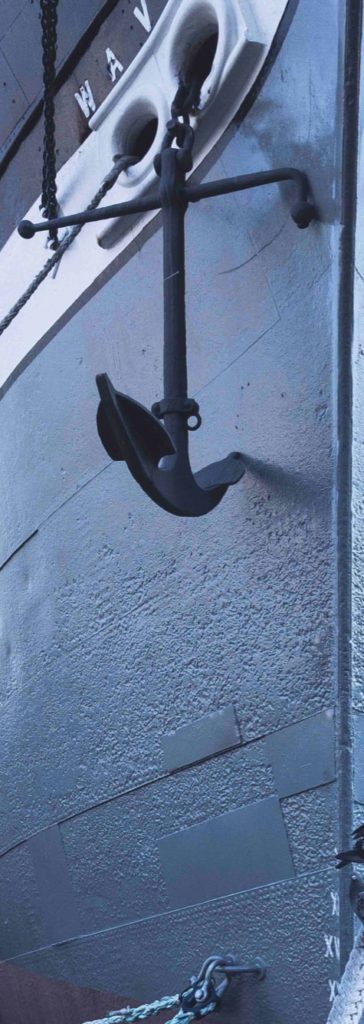Boonk Van Leeuwen
Boonk Van Leeuwen Advocaten
Lichtenauerlaan 50
3062 ME Rotterdam
Boonk Van Leeuwen Advocaten
Postbus 29215
3001 GE Rotterdam
Neem contact op
Telefoon: +31 10 - 2811 811
Fax: +31 10 - 2133 111
The era of remotely controlled ships is near
Autonomous ships are no longer something for Sci-Fi films only.
Very soon, autonomous ships will be used for the transport of cargo and people. The recent announcement from the Texas based maritime robotic expert Ocean Infinity that they will construct eight, 78 meter long autonomous ships, further underlines this.
All around the world, companies and governments alike, are preparing for the era of remotely controlled ships. On Monday 30 November 2020, the European Commission organized together with the Norwegian Autonomous Ships Forum (“NFAS”) its second MASS Summit (MASS stands for Maritime Autonomous Surface Ship) whereby amongst others the esteemed secretary general Mr Lim from the IMO and the responsible ministers of transport from Finland and South Korea presented their countries’ perspective and policies on autonomous vessels.
Changing maritime legislation in order to provide the legal framework for the autonomous ships to be able to legally sail in national and international waters is necessary. In this article, I will try to make the subject of the legislative challenges autonomous ships bring a bit more tangible using recent Dutch case law on the collision between a pilot vessel and a sea-going ship: District Court Rotterdam 20 March 2020, ECLI:NL:RBROT:2020:3391.
The judgment is worth reading for anyone who is interested in the explanation and interpretation of various regulations from the Convention on the International Regulations for Preventing Collisions at Sea, 1972 (“Colreg”). For the purpose of this article, I will only focus on the two aspects of the case namely the use of a pilot and the requirement to have a proper look-out.
On Sunday 21 January 2018 at 04:12AM, a Dutch pilot vessel collided with a seagoing ship flying the Panamanian flag in Dutch territorial waters, north west of West Kapelle. The seagoing vessel coming from the port of Ghent, Belgium with destination Murmansk, Russia, had just disembarked the pilot, who was picked up by a different pilot vessel than the one involved in the incident, when the collision happened.
This brings us to the first legal issue for autonomous ships: how to deal with the obligation for a seagoing vessel to use a pilot in certain areas as prescribed in the Dutch Maritime Traffic Code (“Scheepvaartverkeerswet”)? Pilots are of significant importance for the safety of the maritime traffic as they know the area and its local phenomena such as winds and deceptive currents as none other. These factors remain the same irrespective whether there is a captain and crew on board or not.
So, would an autonomous ship get an exemption from the obligation to use a pilot because the AI of the ship does not require someone with knowledge of the local waters to safely sail the ship?
Or will the future pilot stay ashore, sit behind a computer screen and take over the command of the ship from the ship’s operational centre wherever in the world that may be?
Back to the Dutch collision case: at dispute was which vessel had to give way. The pilot vessel was on the seagoing vessel’s starboard side and therefore claimed priority in the crossing (rule 15 Colreg). However, the Court decided differently. The seagoing vessel was considered restricted in her ability to manoeuvre as she was in the process of transferring a person (rule 3 (g)(iii) Colreg) namely the pilot. Consequently, in accordance with rule 18 (a)(ii) Colreg, the other vessel has to give way in that situation.
Furthermore, the captain of the pilot vessel was alone on the bridge, failed to plot the radar, when sailing leeward he missed the directions given through the VHF about the course and speed and for 12 consecutive minutes did not change the course and speed. Therefore, the Court concluded there was no proper look-out on the pilot vessel, thus breaching Colreg rules 5, entailing the obligation to have a proper look out by sight and hearing and rule 7, obliging every vessel to use all available means to avoid collision whereby proper use of radar equipment is specifically addressed.
Additionally, since the collision took place during night time, there should have been a second person on the bridge as prescribed by the International Convention on Standards of Training, Certification and Watchkeeping (“STCW”).
Consequently, the Court ruled that the pilot vessel was to blame for the collision despite being on the starboard side of the seagoing ship.
For the operation of autonomous ships, reinterpretation of what a “look-out by sight and hearing” is, is required. It could be assumed that a proper look-out does not have to be someone physically on board a ship. A (technical) description of the type of camera’s, software and other technology that should be on board in order to comply with rule 5 Colreg could perhaps be acceptable.
The above described issues are just two examples of rules which have to be reconsidered, reinterpreted, re-explained and/or perhaps rewritten for the operation of autonomous ships. In addition to the changes in existing legislation, new rules and regulations have to be written as well, and that is presumedly a much more difficult task for legislators.
The “autonomous ship project” requires the whole industry to work together to align every single detail in order to make it happen. This is surely an interesting process we find ourselves in at the moment.
